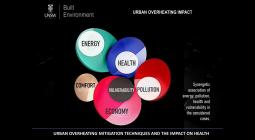Local synergies and antagonisms between meteorological factors and air pollution: A 15-year comprehensive study in the Sydney region.

Highlights
- •15-Year meteorological and pollution data at 14 sites in Sydney are statistically analyzed.
- •NO2 reductions around 50% are countervailed by doubled O3 contents.
- •Temperature and O3 are strongly correlated on account of increasing heat island effects
- .
- •Wind exhibits a significant non-linear impact on local air quality.
- •A clear trend towards hotter, drier and more stagnant conditions is outlined.
Abstract
Associated with rapid urbanization and escalation of bushfire events, Sydney has experienced significant air quality degradation in the XXI century. In this study, we present a 15-year retrospective analysis on the influence of individual meteorological factors on major air pollutants (NO2, O3, PM10 and PM2.5) at 14 different sites in Greater Sydney and Illawarra. By applying a newly developed “zooming in” approach to long-term ground-based data, we disclose general, seasonal, daily and hourly patterns while increasing the level of spatial associativity. We provide evidence on the pivotal role played by urbanization, sprawling dynamics, global warming and bushfires on local meteorology and air pollution. We strike associations between temperature and O3, both as average trends and extremes, on account of increasing heat island effects. The role of wind in a coastal-basin environment, influenced by a vast desert biome inland, is investigated. A steady trend towards stagnation is outlined, boosted by enhanced urban roughness and intensified heat island circulation. Relative humidity is also crucial in the modulation between NO2 and O3. With a sharp tendency towards drier and hotter microclimates, NO2 levels dropped by approximately 50% over the years at all locations, while O3's median levels almost doubled in the last 10 years. Further, O3 and PMs shifted towards more frequent extreme events, strongly associated with the exacerbation of bushfire events. Such results suggest an urgent need to prioritize emission control, building air tightness improvement and urban heat mitigation, towards a future-proof governance in Sydney and similar regions in the world.
*Full article here
24 May 2021
Science Direct




